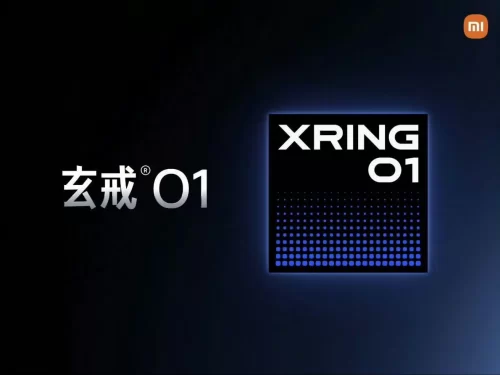
Chinese tech giant Xiaomi is set to enter the high-stakes arena of custom smartphone chips with the upcoming launch of its self-developed XringO1 processor. Announced by CEO Lei Jun on Weibo, the chip is expected to debut later this month, with growing anticipation in the mobile industry around its potential.
While Lei Jun did not disclose detailed specifications, industry sources have revealed that the XringO1 is built using TSMC’s advanced 3nm process and based on ARM architecture. The chip marks a renewed push by Xiaomi to reduce reliance on third-party suppliers like Qualcomm, as the company joins a broader trend of smartphone makers moving toward proprietary silicon.
Performance in Focus, but With a Google Tensor-Like Twist
According to leaks ahead of its release, the XringO1 will feature a 1+3+4 CPU architecture, including one prime core running at 3.2GHz, three performance cores at 2.5GHz, and four efficiency cores clocked at 2.0GHz. Built on TSMC’s 4nm N4P node, the setup closely mirrors the Qualcomm Snapdragon 8 Gen 2, but Xiaomi is reportedly taking a different approach.
Like Google’s Tensor chips, XringO1 may prioritize system-level integration and AI capabilities over raw benchmark performance — suggesting Xiaomi is aiming for a tighter hardware-software synergy.
First Stop: Xiaomi 15S Pro
The XringO1 chip is expected to make its commercial debut in the Xiaomi 15S Pro, a China-exclusive special edition of the upcoming Xiaomi 15 Pro. The 15S Pro is believed to share much of its hardware with the Snapdragon 8 Elite-powered flagship but will offer Xiaomi’s in-house chip as a unique selling point.
Xuanjie Technology at the Helm
XringO1 is the product of Shanghai Xuanjie Technology, a Xiaomi subsidiary formed in 2021. The internal chip division is led by former Qualcomm executive Qin Muyun, underscoring the company’s commitment to deepening its chip design expertise.
Xiaomi first experimented with in-house chips in 2017, launching the Pengpai S1 on a 28nm node. However, the project stalled due to high development costs. Since 2019, the company shifted its focus to less complex chips, such as image sensors and power management ICs, before resuming full-scale mobile SoC development in 2021.
An Industry-Wide Shift Toward Custom Silicon
Xiaomi’s strategic move echoes a broader shift in the smartphone industry. Apple pioneered this trend with its A-series and M-series chips, while Samsung (Exynos) and Huawei (Kirin) have significantly increased their self-sufficiency. Huawei, for instance, reached 74.6% chip self-sufficiency by late 2019, while Samsung equipped over 80% of its Galaxy A series with in-house processors.
Developing custom chips not only cuts long-term costs but also enables better optimization of hardware for software, giving brands greater control over performance, energy efficiency, and AI integration.
Qualcomm Still Dominant—for Now
Until now, Xiaomi has largely depended on Qualcomm for its flagship smartphones. The American chipmaker reported $17.8 billion in revenue from China in FY2024, a 46% increase year-on-year. But with the XringO1, Xiaomi signals its ambition to carve out a bigger share of the semiconductor value chain.
The company’s latest flagship, Xiaomi 15 Ultra, launched earlier this year with a starting price of 6,499 yuan ($901), is powered by Qualcomm’s Snapdragon 8 Elite chip. Going forward, Xiaomi intends to equip its premium phones and tablets with its own silicon.
Despite U.S. export restrictions limiting advanced chip manufacturing for AI in mainland China, smartphone processors have largely remained exempt—giving Xiaomi a vital opportunity to scale its chip ambitions.
